Stumps
Three generations cleared them; one generation planted. Generation five swears the place must be enchanted.
July 1, 2024. I’m traveling home today after exchanging family visits the past two weeks, so this seemed an excellent time to pull “Stumps” out of the archive. When this essay first appeared in June 2023, it received more views, “likes,” and comments than anything I had posted to date. Two or three dozen of you may have seen it then. Please feel free to share it with anyone who would enjoy a dash of quirky, hopeful summer enchantment. 🌲
It baffled me at first, more than thirty years ago, when my father brought home stumps and deposited them on the back acre. Seedlings - sure. But stumps? He found them for sale beside a road, my mother said. The seller even threw in delivery.
That made two crazy men.
I was in the East at the time, maybe in graduate school. Hearing over the phone about my father’s crackpot idea, I pictured two or three feet of heartwood sticking out of the ground, a trip hazard. Why on earth would someone buy and plant what everyone else was tearing out and grinding into dust?
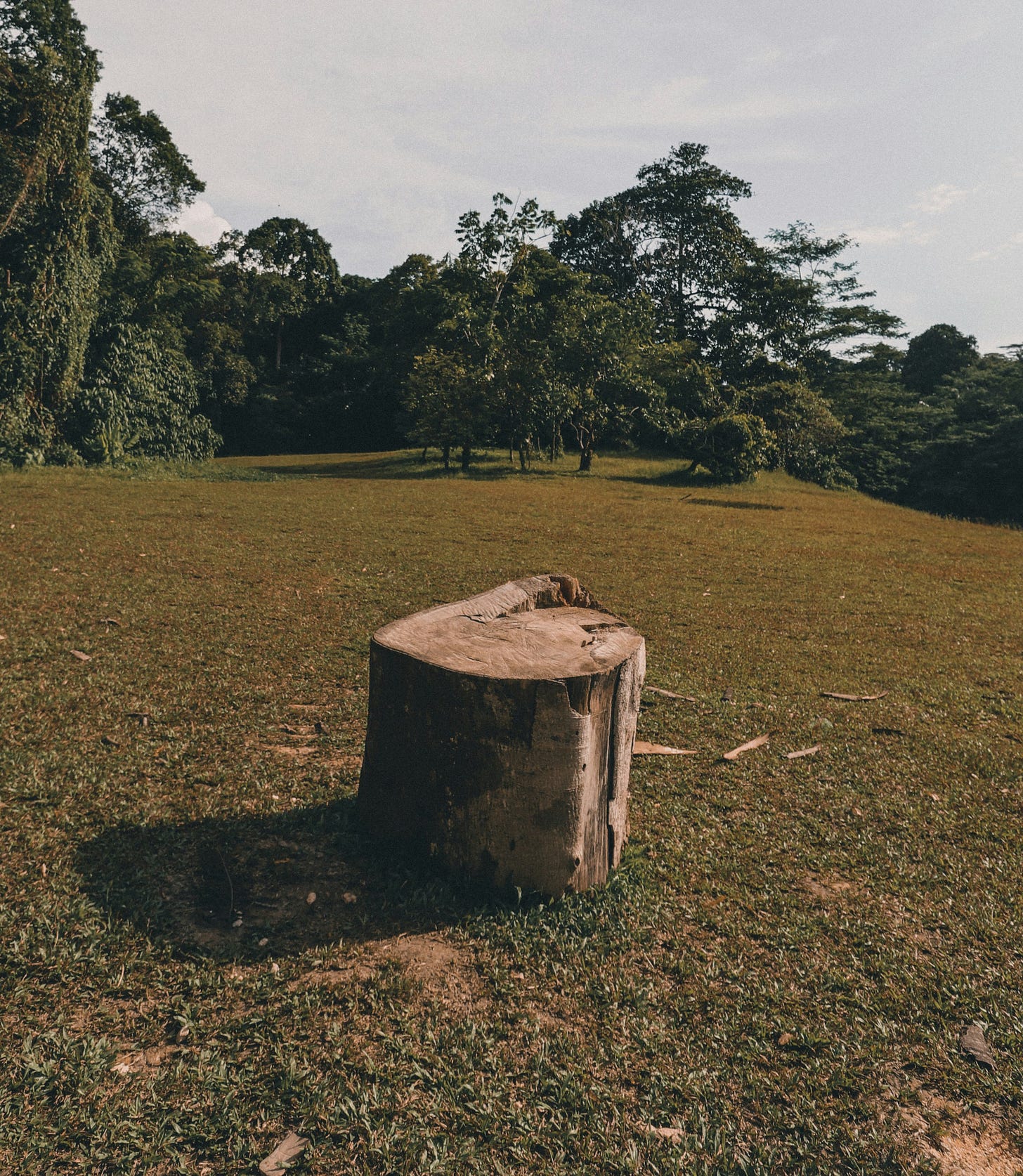
I was not prepared for the sight of them, towers of grand old growth, notched by old-time logging crews. Three stumps stood separately on the lot, each one like the first house in a new subdivision, waiting for neighbors to give it the look of belonging. From soft, rotted places under the bark, seedlings nosed the air. Standing under them, at last I understood the allure: one part history, one part ecology, one part reparation.
Like many families that moved into Coast Salish territory from Europe or the eastern States, mine depended for the better part of a century on clearing the land. On one side of the family, we cleared to plant pastures and raise dairy cattle. On the other side, a great-grandfather logged the forests; great-aunts and uncles worked in the sawmill. A great-uncle drove a long-haul truck in and out of northwest timberland.
But even as they cut some trees for utility, they loved and prized others for reasons they did not need to articulate. One grandmother kept a small orchard on a wide city lot, picking apples for sauce every autumn. The other side of the family held reunions in a park called Forest, where a massive tree trunk with a hollow interior made an outdoor playroom for imaginative kids.
The imaginative kid never left my father. He liked to find things by the side of two-lane roads and carry them home: paintings from his favorite mountain artist; books from eclectic shops; seedlings, when they could be spared.
Then one day: stumps.
They made roosts for birds, catch-basins for rainwater, apartment houses for insects. Small mammals sheltered beneath them in grass gone wild. On Easter morning, it was discovered that some notches could hold a colored egg. With all this activity, new seedlings appeared frequently and were allowed to grow.
What grandparents and great-grandparents had cleared, the grandchildren, my parents, slowly put back.
I come back for the first few days of summer, expecting to feel the solemnity of this history as I head up the rise past the garden and the weeping willow and the fire pit.
But the woods and I are giddy with spring and playful as a den of cubs. Throughout history, trees have been suspected of enchantment. The ones on my parents’ back acre are no exception.
Where my brother-in-law built a treehouse in Stump Grove One, for all the world, it looks like a magic beanstalk pushed its way up through a tiny cabin, knocked out a wall, punched through the roof, and kept going for that giant.
A little farther on, a tiny vibration in the foliage pulls me up short just before I walk into a small leaf twirling and swinging at eye level. I step back and raise my camera to catch whatever sprite or brownie or pixie lies curled in the leaf. But, as everyone knows, fairies cannot be caught on camera. (See video, 20 seconds.)
Under a Snowball Viburnum, I have the distinct impression that Oberon and Titania have been hanging decorations for a midsummer night’s dream, and I’ve just stumbled into it.
Through a screen of branches, I can just make out Stump One, which reminds me of Devil’s Tower, Wyoming, the rock formation that inspired Steven Spielberg to think of alien spaceships. Douglas firs now surround and dwarf the old stump, so that nothing larger than a flotilla of fairies could land here.
A thin, white cloak covers the conifers, compliments of the towering cottonwoods. Dizzy with language and indifferent to the taxonomy of plants, I want to say there is a furze on all the firs. I like the sound of it, even if it does inspire botanists to cancel their subscriptions.
Every turn carries a provocation to metaphor.
If enchantment facilitates united states, I feel united here with the prior generations who lived so much among trees and would have liked—I feel certain—to stroll here in dancing light.1 A practical people mostly, they would find my words extravagant, but their eyes would twinkle, their good humors rise to the game.
My mother joins me between the garden and the upper ground, drawing my attention to the fruit beginning to grow on the branches of dwarf apples and pears. I remember when, more than thirty years ago, Dad gave her this orchard for Christmas. He propped the bundle of sticks in the front doorway and rang the doorbell. A dozen sticks met her with tags attached: some apples, pears, nuts, a fig, and so on. He called it an orchard.
Mom lit up over her orchard, although the two of them were able to compass the whole of it in their four hands. Where I looked out the front door and saw a bundle of sticks, they looked out and saw, with future-facing, enchanted eyes, the fruitful, half-wild acre that sticks and stumps would eventually become.
True, a twirl of leaf and a curl of light
May not furl us together,
But then — they might.
Around the Substack Neighborhood
Since I originally published this post last June, I’ve discovered many fine nature writers on Substack. Rereading “Stumps” reminded me of a few of them. will be featuring some of the best ones in a new series called NatureStack Journal (where she, too, had a midsummer Oberon and Titania moment recently).
prays with her feet at , writing about her walks and the privatization of land just one state away from me, in Montana (“To Walk a Prayer to the World”). Thinking about my family’s relationship to land and my good fortune of having a couple of acres to walk reminded me of her experiences with fences and open space.
writes quite far from the U.S. Pacific Northwest, in England, but we must be on the same wavelength today. We both reposted an essay from our archive about the creative work of parents, mine in the garden, his in art (“The Magic Room”). Tom is so alert to nature all the time that his art-essay begins with flooding.
I send thanks to two of the first people to share this essay last year, , who writes about gratitude, art, and authentic living at , and , who posts stories, poems, and songs at . The encouragement of strangers at that time meant a great deal.
Coming Up from Quiet Reading
I’ll be sending out an extra post on Friday this week as part of ’s Same Walk, Different Shoes project - an anthology of stories written by people who have exchanged prompts about things lost or left behind. We each receive an anonymous prompt from another participant and write a story from their prompt and our own experience. As you know, I usually write nonfiction essays. I’m making an exciting foray into story-writing. Watch for that July 5th.
Next Monday, I’ll announce guidelines for Volume 2 of Enchanted by the Book. For those who’ve been reading all this last year, you’ll remember Volume 1. For everyone else: If you’ve ever been enchanted by a book, poem, or story, here’s your chance to write about it and share the experience this July. Details coming next week. For now, tickle up those memories of swoon-worthy reads.
Later in July: I’m working on the next post in the popular series The Once and Future Author - another backstory from the life of a successful writer. Unless you recognize the story, this month’s writer might surprise you. Stay tuned!
Wishing you cool retreats as we in the Northern Hemisphere enter the heat of summer!
Tara
This newsletter started life as Enchanted in America. My original goal was to explore the theory that (aesthetic) enchantment contributed to (political, psychological) united states. A few months into that, I felt I wanted the newsletter to include other topics, too.





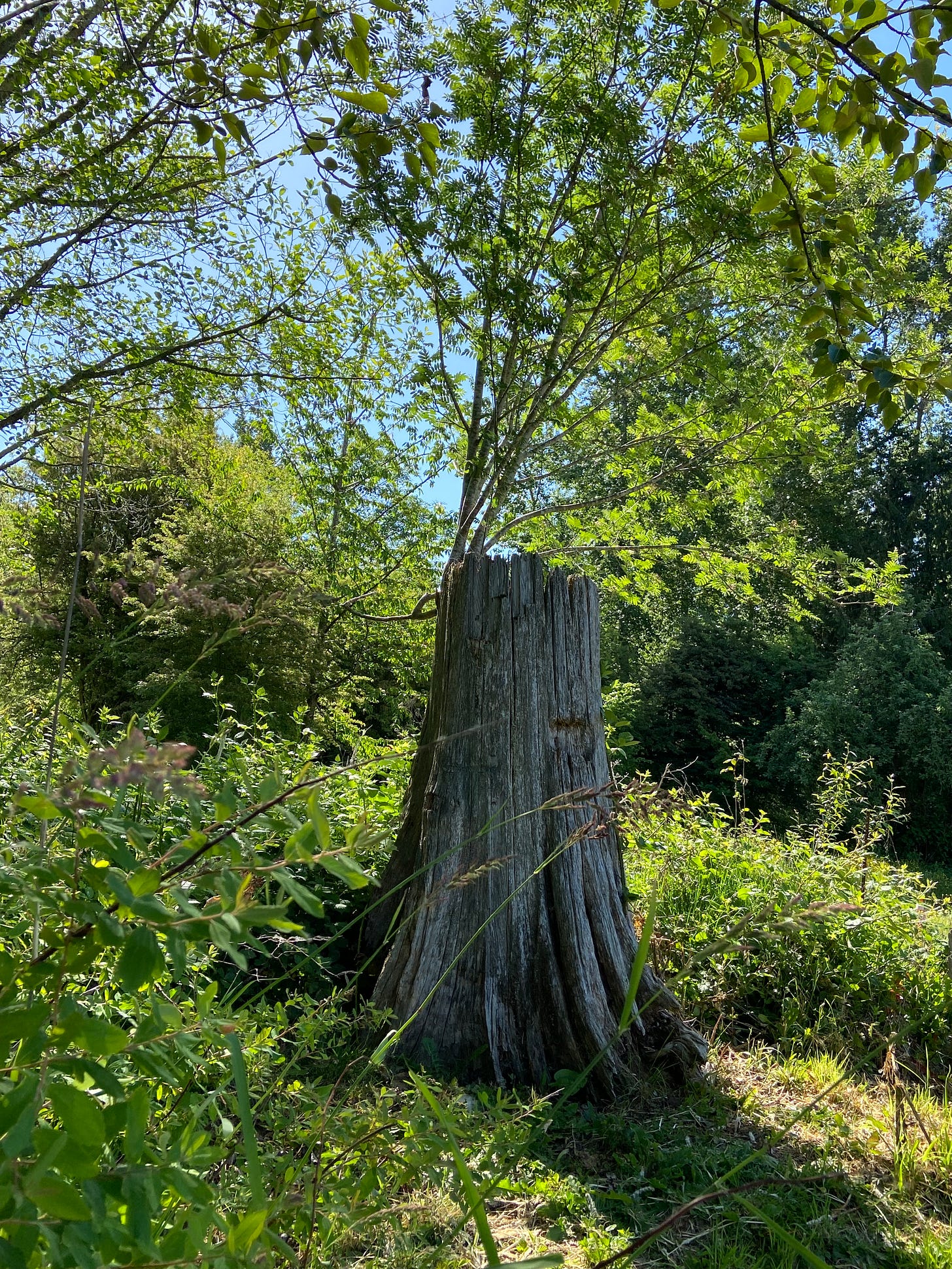
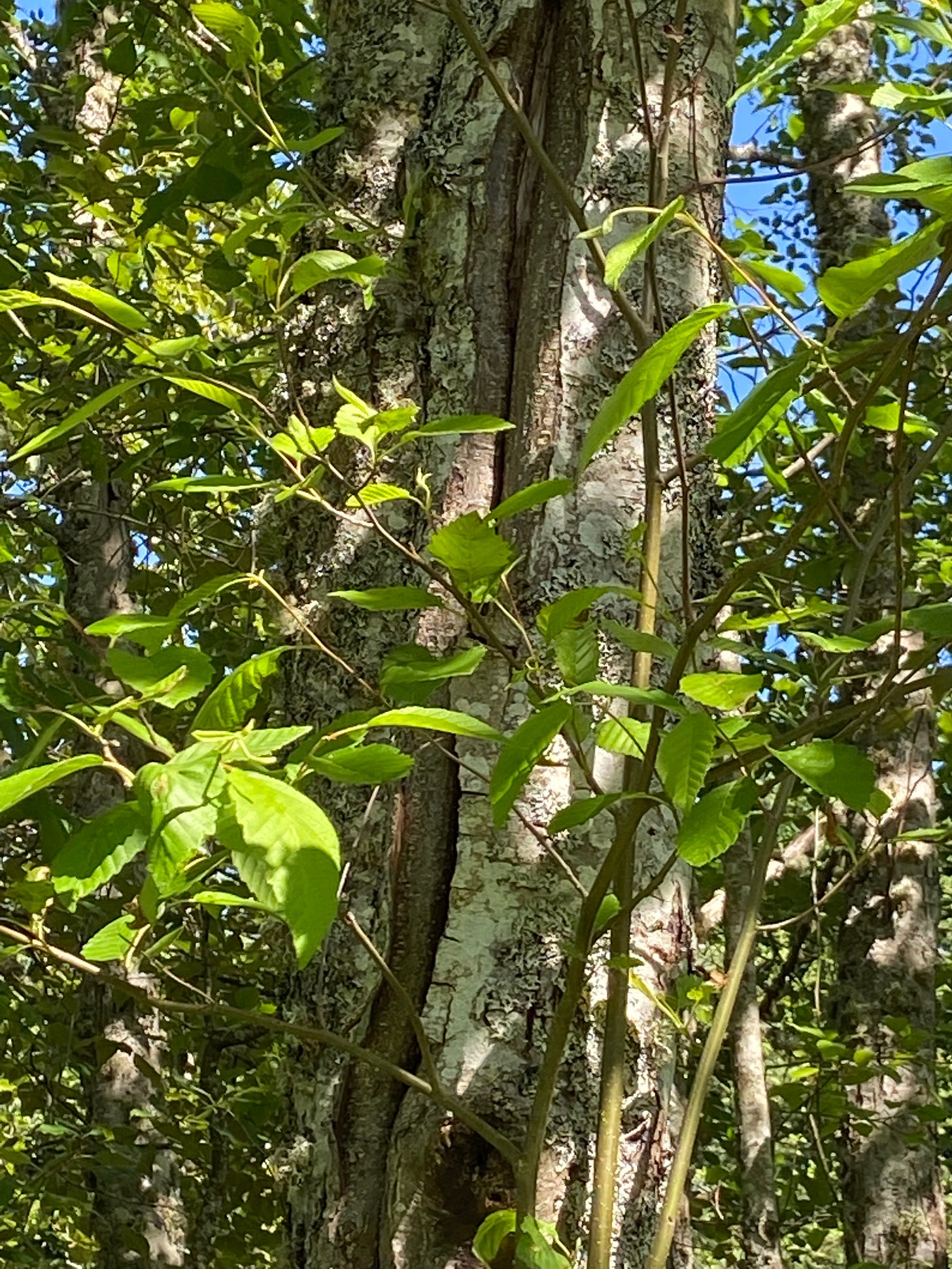
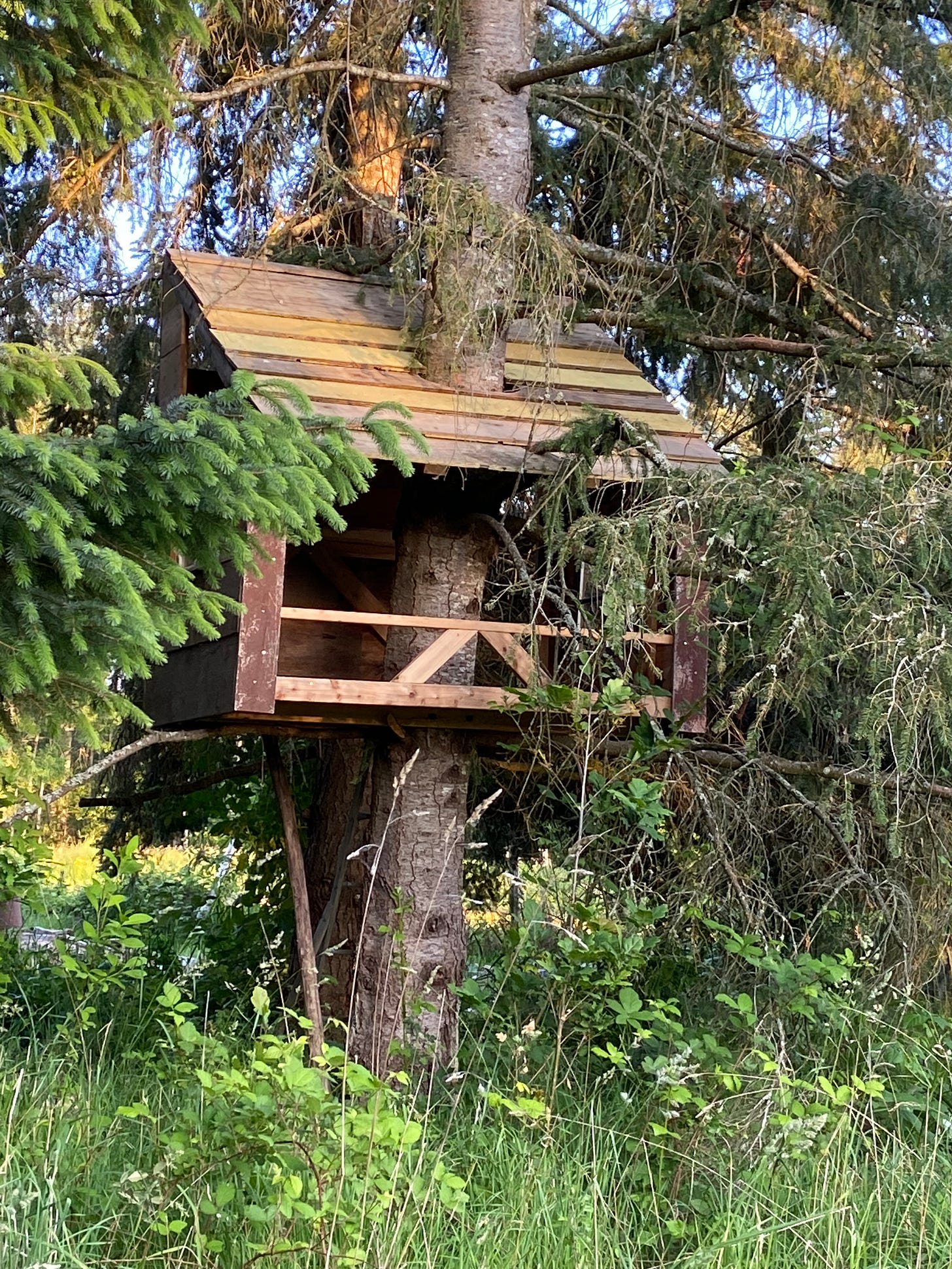
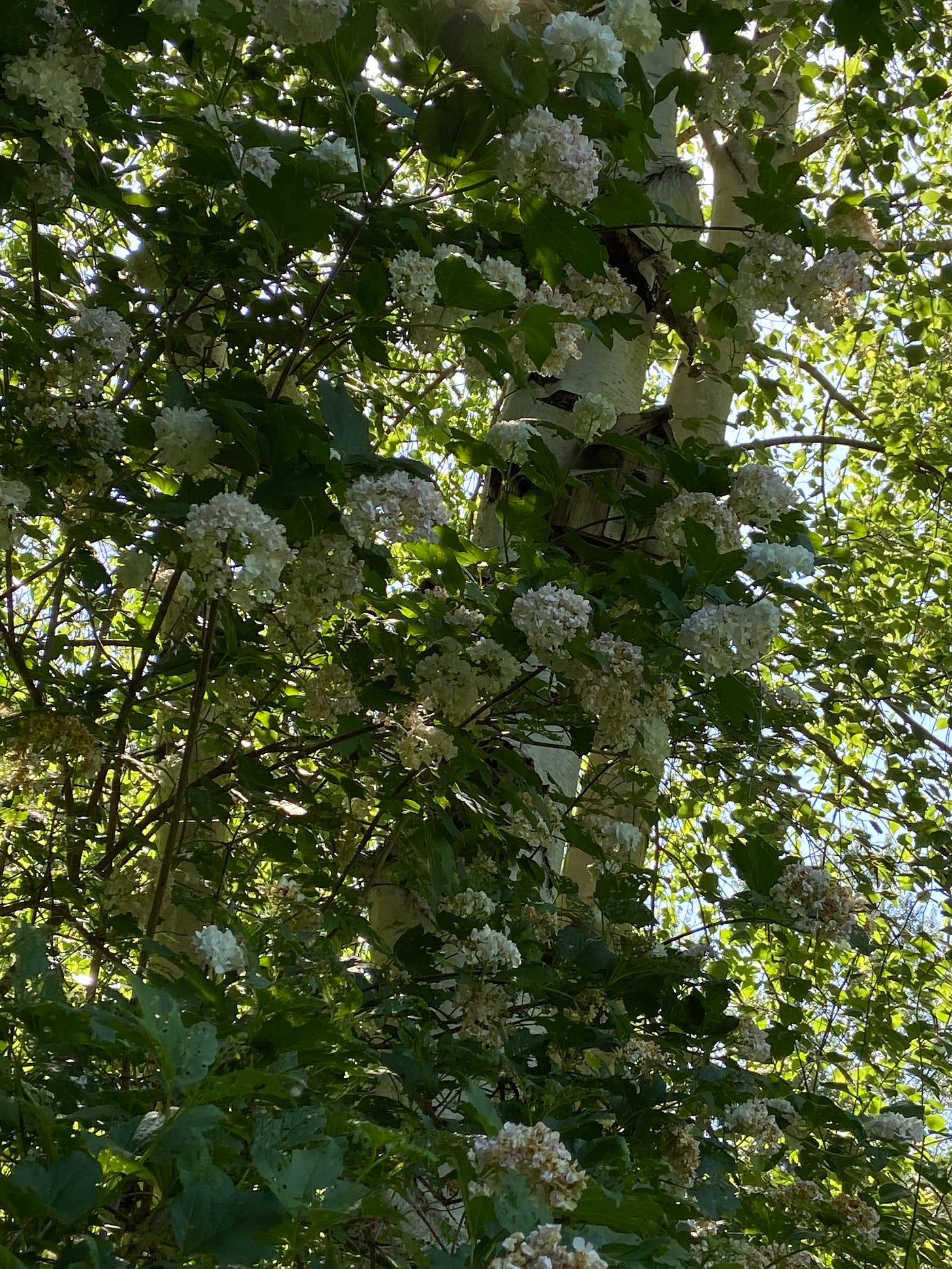
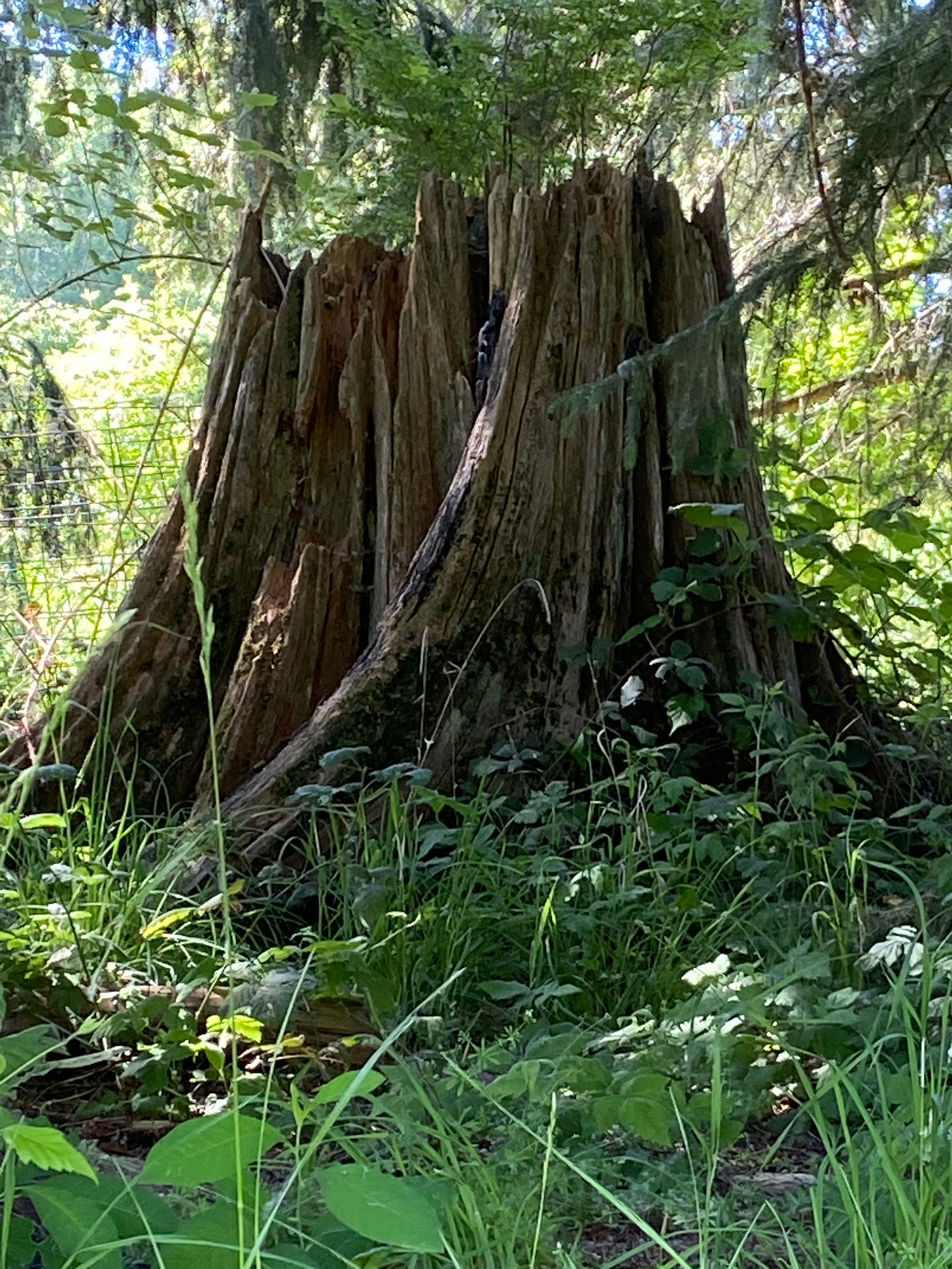
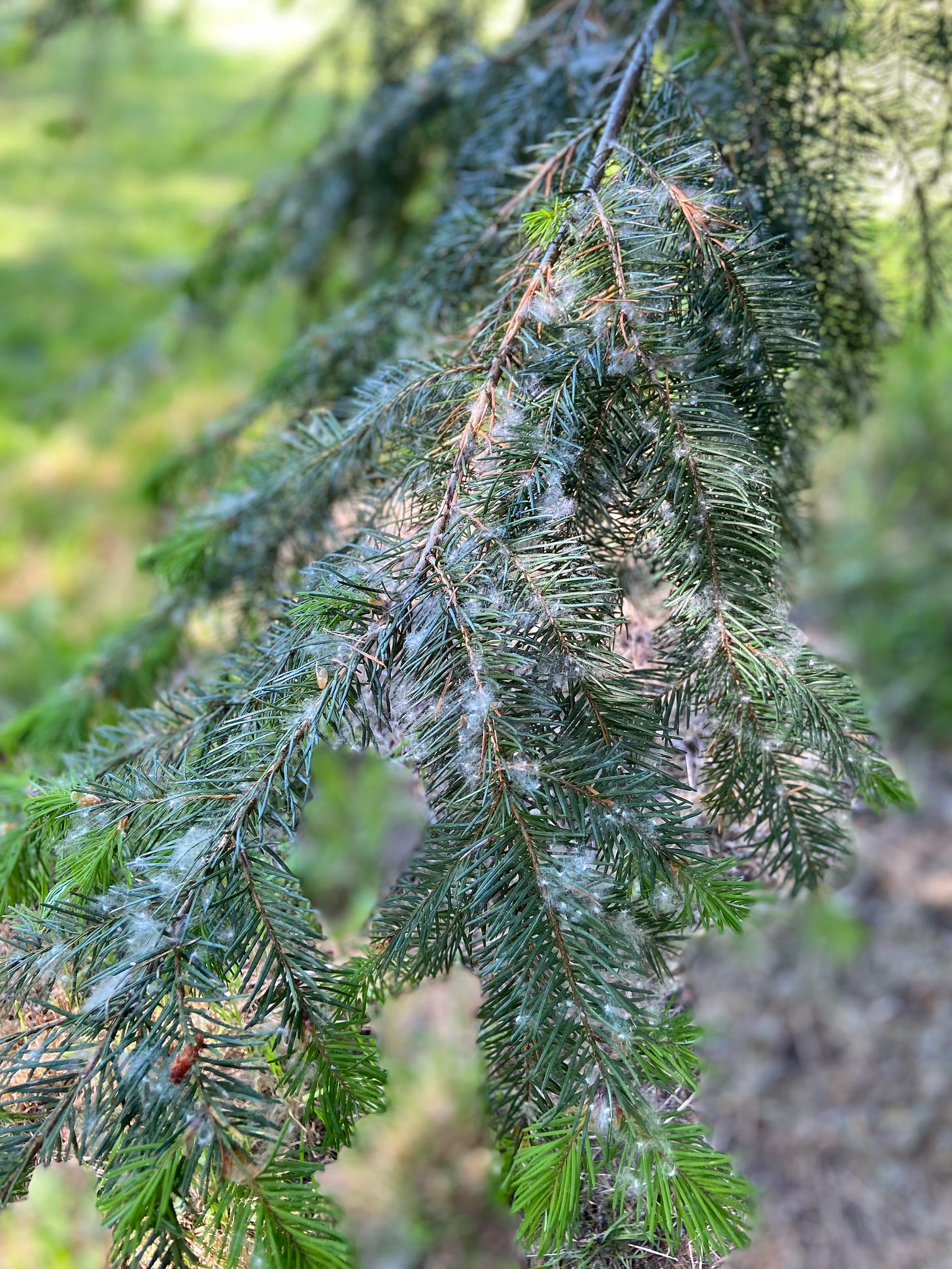
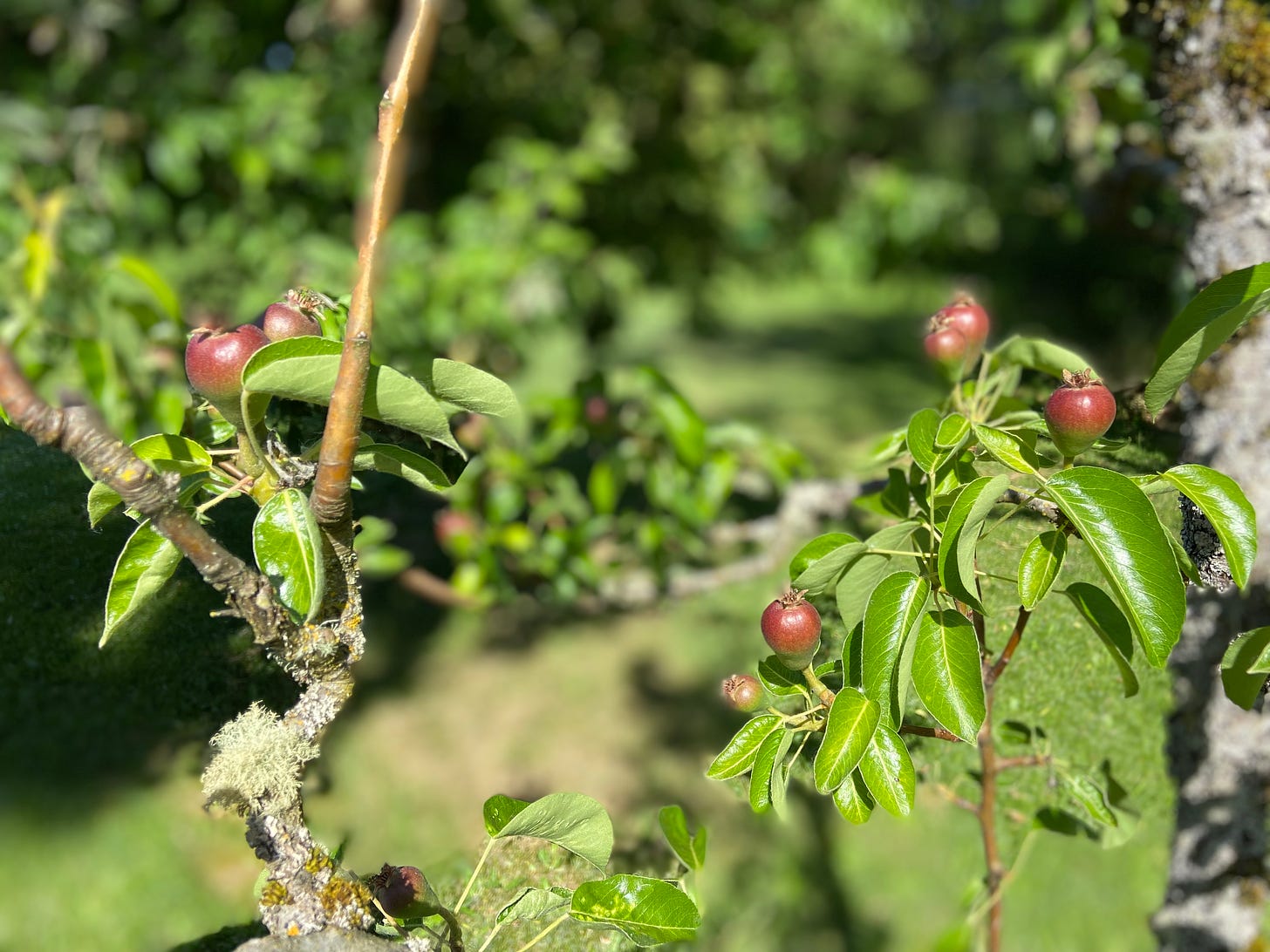







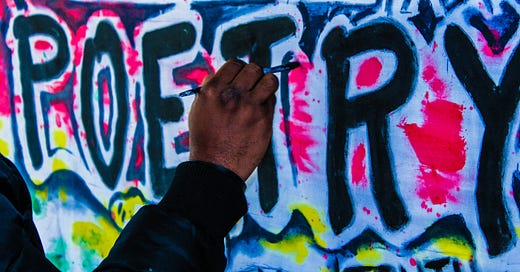



I still remember the story of your dad running upstairs on Christmas day to retrieve "just one more gift." Now stumps. What a man of heart.
“Future-facing, enchanted eyes”!! May we all have this vision.